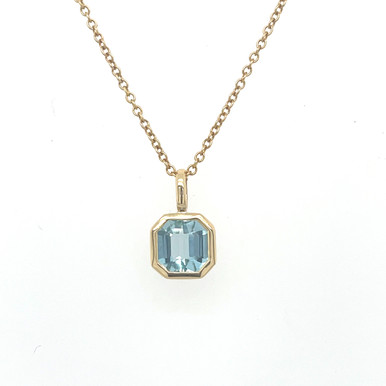Aquamarine, a mesmerizing gemstone, derives its name from the Latin words "aqua" meaning water and "marina" meaning sea, translating to "water of the sea." This name perfectly captures the stone's stunning blue to blue-green hues, reminiscent of the ocean's tranquil and refreshing colors. Belonging to the beryl family, which also includes emeralds and morganites, aquamarine is cherished not only for its beauty but also for its remarkable clarity and durability. Typically found in granite pegmatites and metamorphic rocks, the most prominent sources of aquamarine include Brazil, Madagascar, Nigeria, Pakistan, and Russia.
One of the most captivating aspects of aquamarine is its varying shades, which can range from pale, almost translucent blue to deep, vivid blue-green. The color of an aquamarine is influenced by the amount of iron present in the crystal structure. Generally, the deeper and more intense the color, the more valuable the gemstone. Furthermore, aquamarine's excellent transparency and vitreous luster make it a favored choice for a variety of jewelry pieces, from elegant rings and earrings to sophisticated necklaces and bracelets.
Beyond its aesthetic appeal, aquamarine is imbued with a rich history and symbolism. In ancient times, sailors believed that aquamarine could calm the waves and protect them from the perils of the sea, earning it the reputation as a talisman for safe voyages. It is also said to inspire calmness, clarity, and courage in the wearer, making it a popular choice for those seeking tranquility and mental clarity. Additionally, aquamarine is the birthstone for March, symbolizing youth, health, and hope. Whether appreciated for its stunning beauty or its symbolic significance, aquamarine continues to captivate and inspire those who encounter it.

